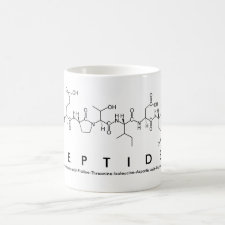
Authors: Patil Y, Ameduri B
Article Title: Advances in the (co)polymerization of alkyl 2-trifluoromethacrylates and 2-(trifluoromethyl)acrylic acid.
Publication date: 2013
Journal: Progress in Polymer Science
Volume: 38
Issue: (5)
Page numbers: 703-739.
DOI: 10.1016/j.progpolymsci.2012.09.005
Abstract: This review reports an overview on the synthesis, polymerizability, uses, and applications of alkyl 2-trifluoromethacrylate (or α-trifluoromethacrylate) monomers. Alkyl 2-trifluoromethacrylate (where the alkyl group stands for methyl, ethyl, or t-butyl) and 2-(trifluoromethyl)acrylic acid are very important comonomers and their copolymers or terpolymers have drawn a lot of interest in High-Tech applications as well as their low toxicity, easy availability and easy handling which make them versatile comonomers and materials. First, several strategies on the preparation of such monomers mainly from 3,3,3-trifluoropropene are summarized. These monomers can further lead to various original monomers bearing functional groups such as epoxide, cyclic ethers, oligo(ethylene oxide), or perfluorinated group, and others. As highly electron-withdrawing monomers, alkyl 2-trifluoromethacrylate and 2-(trifluoromethyl)acrylic acid can easily be homopolymerized under anionic conditions but several studies reported that the homopolymerization failed from radical initiators. However, homopolymerization of 2-(trifluoromethyl)acrylic acid has recently been achieved under specific radical and pH conditions successfully. Moreover, the radical copolymerizations of alkyl 2-trifluoromethacrylate and 2-(trifluoromethyl)acrylic acid with electron-donating hydrogenated monomers such as α-olefins, vinyl ethers, styrene, and norbornenes led to a wide range of alternating copolymers. More recently, the conventional radical (co)polymerization or (ter)polymerization of these monomers with fluorinated monomers (such as 2,2,2-trifluoroethyl methacrylate, 2,2,2-trifluoroethyl α-fluoroacrylate, hexafluoropropylene, fluorinated vinyl ethers or vinylidene fluoride, VDF) has enabled to obtain original fluoropolymers. In addition, the controlled radical copolymerizations of these α-trifluoromethyl containing monomers with VDF were successfully achieved by different techniques and could promote original syntheses of block copolymers. Materials resulting from these monomers are useful in the field of lithography, molecularly imprinted polymers, optics, adsorbants, polymer electrolyte membranes for fuel cell, lithium ion batteries, protective stone coatings, multicompartmental micelles, and nanocomposites
Template and target information: Review - trifluoromethylacrylate polymers
Author keywords: alkyl 2-trifluoromethacrylate, alternated copolymers, fuel cell membranes, radical copolymerization, reactivity ratio, 2-(trifluoromethyl) acrylic acid



Join the Society for Molecular Imprinting

New items RSS feed
Sign-up for e-mail updates:
Choose between receiving an occasional newsletter or more frequent e-mail alerts.
Click here to go to the sign-up page.
Is your name elemental or peptidic? Enter your name and find out by clicking either of the buttons below!
Other products you may like:
 MIPdatabase
MIPdatabase









